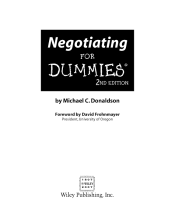Summary: Bvj Biologie Voor De Onderbouw | 9789402057096 | Lineke Pijnappels
- This + 400k other summaries
- A unique study and practice tool
- Never study anything twice again
- Get the grades you hope for
- 100% sure, 100% understanding
Read the summary and the most important questions on BVJ Biologie voor de onderbouw | 9789402057096 | Lineke Pijnappels
-
1 food and nutrients
This is a preview. There are 11 more flashcards available for chapter 1
Show more cards here -
What are building blocks?
Thetypes ofnutrients that are needed for your body to grow and develop and for repairing wounds and other damage. -
Where can your body use building blocks for?
To help make new cells andtissues . -
Fuels are types of nutrients that provide energy. Where is energy needed for?
Organs need energy to function- To keep the body temperature up
- For
growth and development
- For
repairs to your body
-
Food examples of proteins
- Eggs, cheese, fish, chicken, tofu, yoghurt, beans and peas
- Eggs, cheese, fish, chicken, tofu, yoghurt, beans and peas
-
Food examples of carbohydrates
- Pasta, bread, rice, sugar, potatoes, honey and grains
-
Food examples of fats
- Chips, oil, fries,
mayonaise , coffee milk, avocado, herring and olives
- Chips, oil, fries,
-
Food examples of minerals
Fish , milk, (cottage) cheese, eggs, tofu, chicken and carrots
-
4 How much is healthy?
This is a preview. There are 10 more flashcards available for chapter 4
Show more cards here -
On which factors does the amount of energy needed depend on?
Gender - age
- body size
- physical effort
- climate and season
-
What are the consequences of overweight?
- You run an increased risk of diabetes 2/
cardiovascular disease - you are more likely to have
problems with your back, neck knees,ankles and feet. (joints)
- You run an increased risk of diabetes 2/
-
What is the formula for BMI and explain how to read it off
BMI = weight (kg): height (m2 )= kg/m2 - find your height along the left line, weight along the middle line, make a line between those two points using a ruler and extend that line, read
BMI off and see colour or table.
- Higher grades + faster learning
- Never study anything twice
- 100% sure, 100% understanding
































